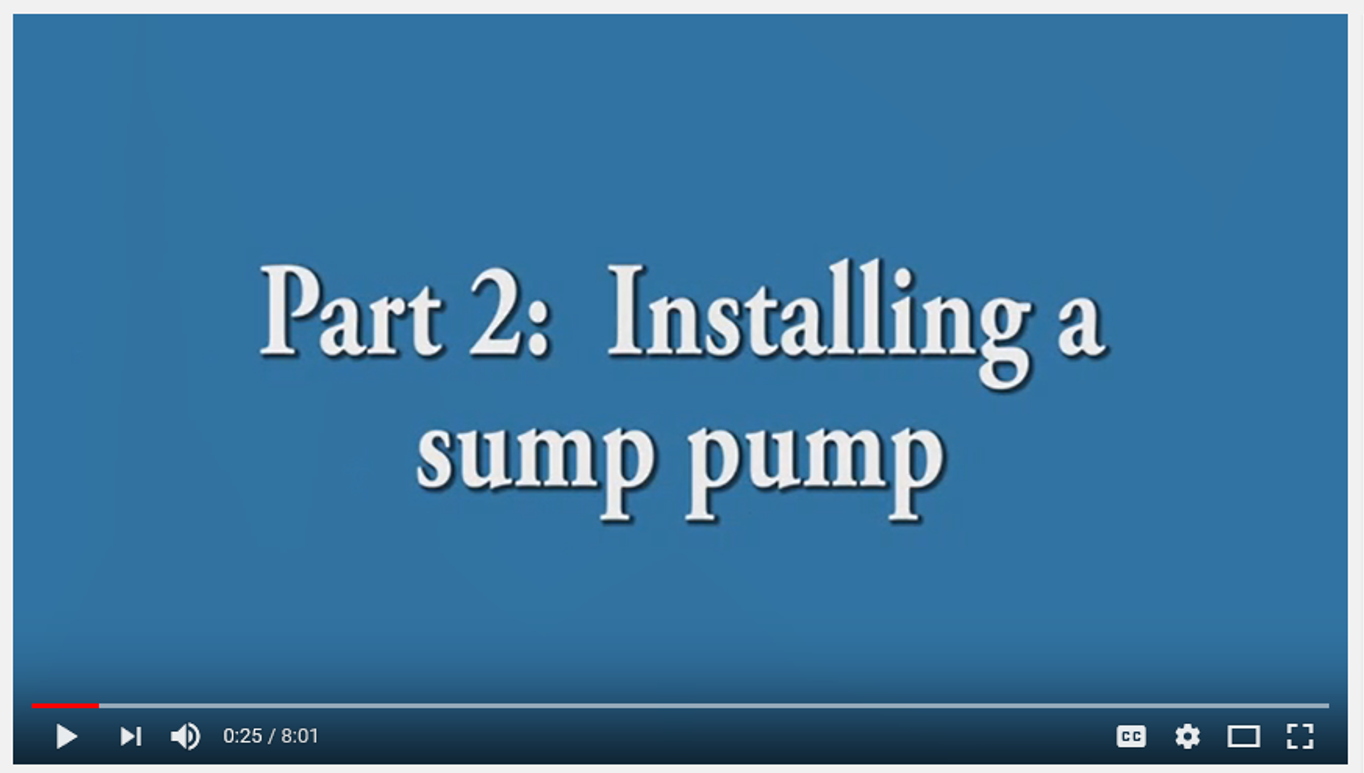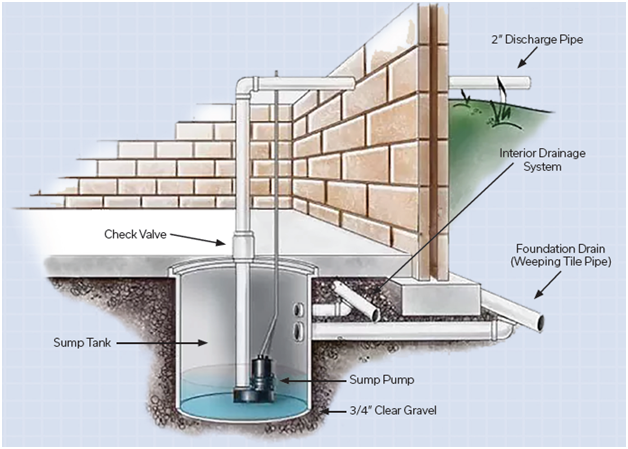Sump Pump with Overflow
Most homes in the City of Windsor have one sewer connection to the City's sewer system, and in the majority of homes this connection is to the sanitary sewer (unless you have a septic tank). Water from around a home's foundation is most often directed into this sanitary connection through gravity drainage or through a sump pump.
How Does a Sump Pump Work?
Sump pumps are located in a sump tank. The majority of sump pumps turn on automatically by a float or pressure sensor. For the float, a buoy floats on the water, causing the arm to move when the water level changes, and the sensor is activated by water over the sensor causing the pump to activate.
Sump pumps are also generally plugged into a working ground fault circuit interrupter; this area does need to be dry to ensure proper functioning of the circuit. Sump pumps can be installed with a battery backup system that will provide the added benefit in the event of power loss to the home.
New technology is also on the market today that can alert the homeowner when the pump is not working properly.
Installing a Sump Pump
Installation of a new sump pump is one component of the City's basement flooding subsidy program. The installation of a sump pump should only be completed by a licensed contractor and inspected by a municipal plumbing inspector. However, here's a bit of what you can expect when you install a new sump pump.
The placement of your sump is important. In the event one was installed when the home was built, it is likely in the perceived best location at the time of construction. However, there are many considerations if a sump is being installed at a later date. Some considerations:
- First and foremost, the sump needs to intercept the weeping tile. More often than not, if your home’s foundation was originally connected to the sanitary sewer, you will need to sever that connection and redirect the weeping tile by installing a new piece of pipe from the weeping tile into your basement beneath the foundation.
- Ideally, the sump should be located as close as possible to the best surface discharge point possible, and that would be an area that is well graded away from the home, with a large area for infiltration and not impacting neighbours.
- Ideally, the sump should also be located in the lowest spot in your basement. Having a sump in the low point of your basement means that, should a flood occur, the system can best assist you in draining your basement in an emergency without water pooling elsewhere.
- If you have a finished basement, everything is a little bit more complicated. The best spot according to the rules above may not be the best spot based on how you have finished the basement. Speak to a contractor about how to find the most ideal location as a compromise between basement usability and sump system effectiveness, and design accordingly.
To learn more, follow the installation of the sump pump with overflow at the "Climate Resilient Home" in this sump pump installation video. Please note: this video was created before the City of Windsor increased the basement flooding subsidy program to 100%.

Including a Discharge Pipe to the Outside
As mentioned above, rainwater and groundwater will be directed to the sump tank. If the sump pump does not have a discharge pipe discharging to an outside landscaped area, the water is being directed to the City's sewer system. This extra water can lead to the City's sewer system becoming surcharged and increase the risk of basement flooding. Installing a sump pump with a discharge pipe to the outside landscaped area reduces the amount of water entering the sewer reducing the risk of basement flooding.
Things to consider when installing a sump pump with overflow:
- This discharge pipe should extend at least two metres away from the home to prevent infiltration towards the home.
- Sump pump discharge lines also need to be equipped with a check valve, which prevents the water contained in the pipe above the sump pump from flowing back into the sump when the pump shuts off.
- The length of the discharge pipe should be minimized where possible to reduce the strain on the pump.

Maintenance
To ensure the proper functioning of the pump, it should always be standing upright; it may fall or tilt due to its vibration and may not work properly or become jammed. To test your sump pump, pour a bucket of water into it to make sure the pump turns on and drains the water. It is important to maintain a clear discharge pipe and to remove debris from the pit and make sure the float is unobstructed.
For more information on environmental initiatives:
- Phone: For general information, call 311. For detailed inquiries, call 519-255-6100 ext. 6127.
- E-mail: emp@citywindsor.ca
